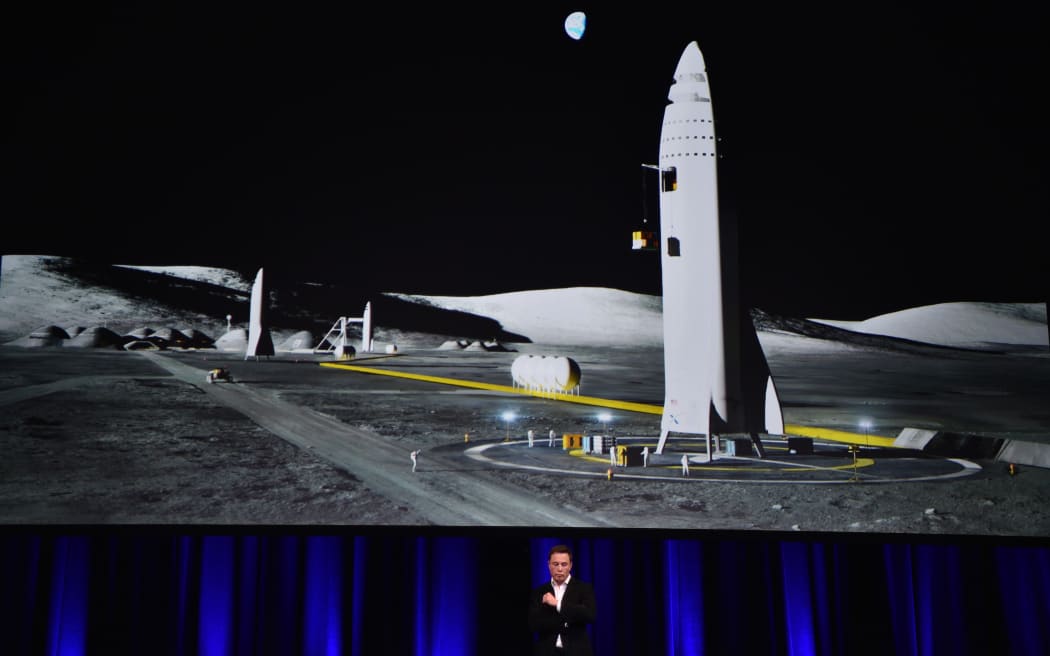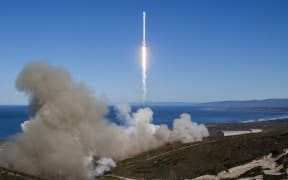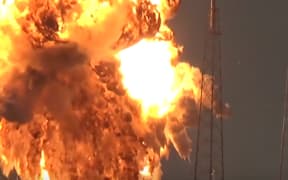SpaceX CEO Elon Musk says his company plans to build a fleet of rockets powerful enough to carry people between major cities on Earth within an hour.

Elon Musk announced SpaceX's latest plans at the International Astronautical Conference in Adelaide, Australia Photo: AFP
Mr Musk has announced that SpaceX will replace its current rocket fleet and capsules with a next-generation spacecraft that could be used to travel to the Moon, Mars, or around the Earth - cutting most long-distance Earth flights to just half an hour.
Codenamed 'BFR', the in-development reusable spacecraft would be a jack-of-all-trades that would make SpaceX's current fleet "redundant", Mr Musk said.
"We want to have one system, one booster ship that replaces Falcon 9, Falcon Heavy and Dragon," he announced at the International Astronautical Conference in Adelaide.
The BFR would be able to transport satellites into orbit, as well as take crew and cargo to the International Space Station, the Moon and Mars.
Even beyond those uses, Mr Musk flagged it could also transport passengers for 'Earth-to-Earth' travel.
In an Instagram post published after his speech, Mr Musk said: "Cost per seat should be about the same as full fare economy in an aircraft. Forgot to mention that."
Mr Musk said his Falcon 9 spacecraft had landed safely 16 times in a row on a single engine, but the BFR would have multiple engines, giving it redundancy in case something went wrong.
"If you can get to a very high reliability with a single engine and then you can land with either of two engines," he said.
"I think we can get to a landing reliability that is on par with the safest commercial airliners."
Mr Musk added that the new vessel would be smaller, and subsequently cheaper, than what was flagged last year in an earlier presentation on the BFR, but would still do "everything that is needed in the greater Earth orbit".
Mr Musk said the BFR would be on the opposite end of the scale in terms of cost, when compared to Saturn V, a expendable rocket used by NASA in the 1960s and 1970s.
"Probably the most important thing that I want to convey in this presentation is that I think we have figured out how to pay for it," he said.
He said it was "crazy" that sophisticated rockets were being built and then crashed rather than designed for re-use.
"I can't emphasise enough how profound this is, and how important reusability is," he said.
SpaceX is considering up to 30 launches in 2018, which is about half of all launches that currently occur across Earth annually.
Launching for Mars in 2022
Mr Musk said SpaceX planned to fly two cargo ships to Mars in 2022, and two crew ships and two cargo ships in 2024.
The first mission will be to find a source of water, while the second mission will be to set up a propellant production plant.
Mr Musk said his transit ship would feature 40 cabins, each of which would house two to three people.
It would also include a central storage area, solar storm shelter, and entertainment area for about 100 people per flight.
"The future is vastly more exciting and interesting if we are a multi-planet species than if we are not," Mr Musk said.
Mr Musk said to make the establishment of a self-sustaining base on Mars or the Moon there needed to be thousands of ships and tens of thousands of re-tanking or refilling operations.
-ABC/BBC



